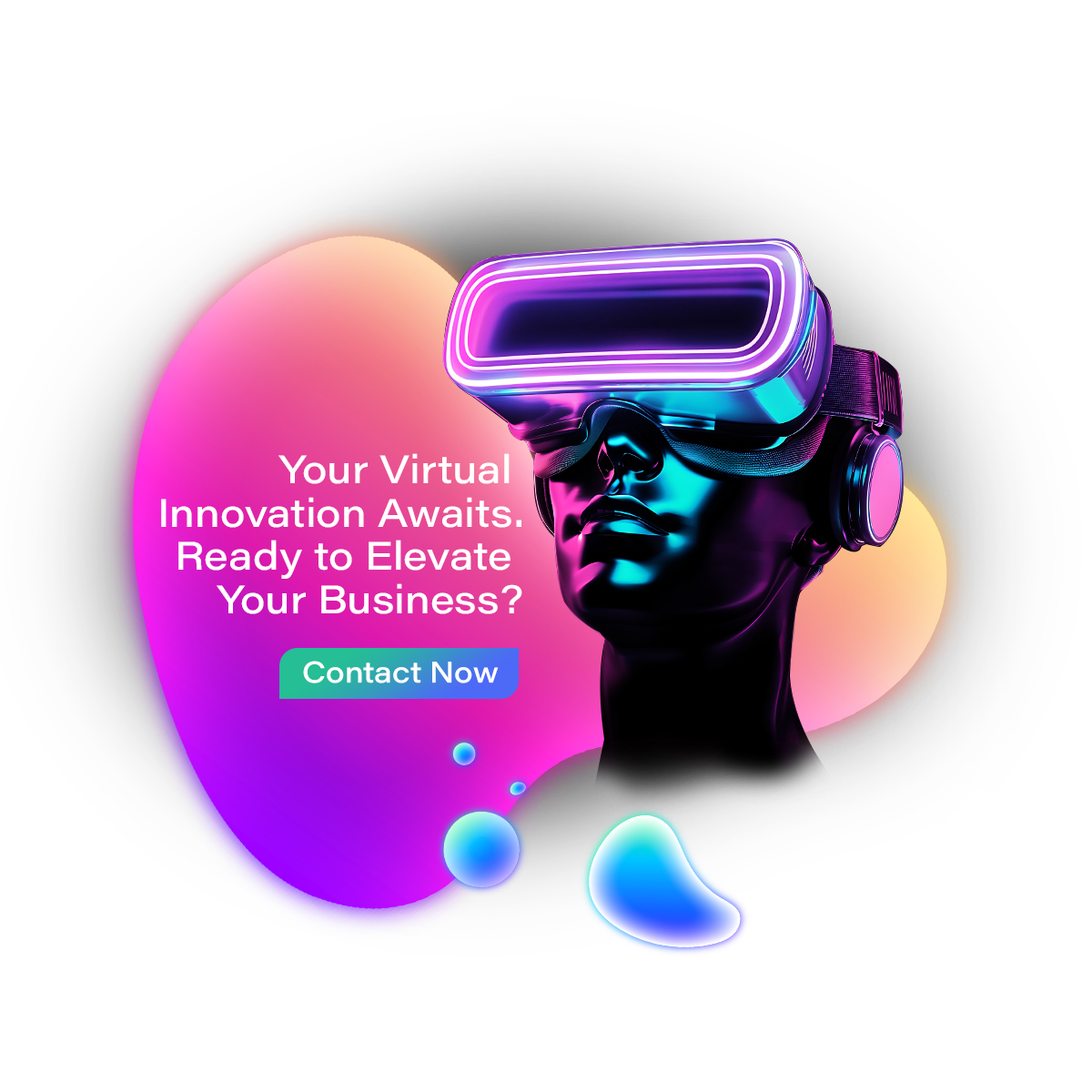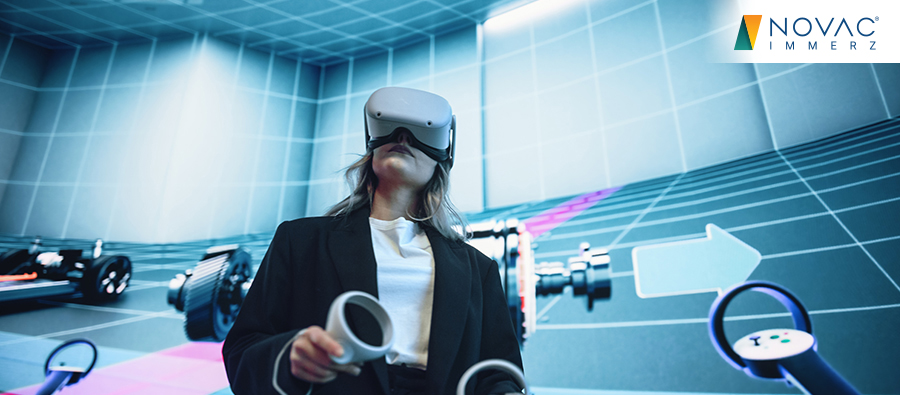Overview
The conventional technique of salespersons in automotive showrooms convincing buyers to
purchase vehicles is changing. Currently, sales professionals highly depend on face-to-face
interactions with customers to attract buyers to the specifications of cars and impress them
with brochures and driving videos.
Gone are the days when customers used to visit vehicle dealerships many times, negotiate
prices with salespersons, and go through the tedious paperwork process. Online car sales via
virtual showrooms are the new norm now.AR VR in
Automotive Industry is exciting as salespersons can use it to project creative
features in cars, share tips about safe driving to vehicle buyers, and also reach a wide
audience in a quick time.
In fact, German automobile conglomerates like BMW, Porsche, and Mercedes-Benz are taking
initiatives by using immersive technologies to sell vehicles, get better sales, and
experience higher growth. In the same vein,Novac Immerz , as a leading AR VR
development company, is transforming the future of the automotive sector with our
immersive solutions, and playing an important role in building a competent workforce.
Different Ways in Which Automotive Brands Use AR and VR for Sales
- Immersive Vehicle Showcase
Augmented Reality has an innate capability to help automotive brands
portray the inner details of their new models, unleash their engineering marvels to
prospective customers, and highlight out-of-the-box features.
Buyers can interact with virtual objects, explore their surroundings,
and view vehicles in the form of virtual 3D assets. Automotive dealers can benefit
from reduced expenses for using physical models and save time taken in setting up a
physical exhibit. This is one of the ways how AR is used in the automotive industry
A detailed report by P&S Intelligence indicates that 56% of GenZ
customers would likely purchase a car if they get a virtual experience first. This
is why viewing a vehicle virtually from various angles and perspectives stands out.
- Digital Showroom Experience
Automotive brands can get closer to their potential customers by providing unmatched
experiences powered by virtual reality solutions in their homes. For example, the German
luxury car manufacturer Porsche combines panoramic views and 360-degree videos as part of
its virtual showroom experience.
Customers can sit in the comfort of their homes, get a complete look at available models,
step inside the car virtually, explore features, and start driving, for instance, on a
highway. The Porsche VR Experience is one of the best examples of automotive brands using VR
for customer experience. Virtual Showrooms are one of the most important ar vr use cases in
automotive and is a viable alternative to a physical visit to a dealership.
How Augmented Reality is Benefiting the Automotive Industry?
Once an automotive brand implements AR features into its virtual
showroom, it gains a competitive advantage by offering memorable customer
experiences. Interactiveness stands out big time, as buyers can comfortably test
vehicles in their own space, leading to higher conversion rates.
- Decreased Chance of Returns
By providing a highly personalized customer experience and an
in-context opportunity to explore vehicles,AR
VR solutions reduce the chances of vehicles being returned to showrooms
post-sales. 3D vehicle models and customization of specific interior and exterior
colours and features can attract customers, as visualization ensures a positive and
successful buying experience.
- Decreased Chance of Returns
Virtual Showrooms allow automotive brand sales personnel to showcase
vehicle features, guide customers, and present models via photorealistic
visualization.
Virtual reality for car showrooms allow interested buyers to explore
their dream model in an immersive way and gain a solid understanding of its
capabilities and performance. Customers also have maximum flexibility to choose
colours, finalize accessories, and modify options in real-time.
Role of AR and VR in Increasing Automotive Sales
Automotive brands aim to ensure a seamless booking process for
customers as they look to accelerate sales in a competitive economy. Dealerships can
experience increased units sold by reaching beyond traditional markets and catering
to car buyers in remote areas.
VR helps automotive sales by serving as an important touchpoint, and
dealers can use it as a digital channel to engage Gen-Z customers. Brands can
benefit immensely from a shortened sales cycle, and digital convenience can offer
more comfort than physical visits.
Automotive dealers are becoming innovative by providing virtual test
drives of their lineups to attract customers via authentic driving experiences in
digital environments.
Why Virtual Training is Critical to Boost Automotive Sales
Indeed, automotive sales professionals must master the intricacies of
offering personalized demos and customer interaction and cope with the pace of
innovation. Additionally,augmented reality solutions closely track buyers'
engagement, interactions, and time spent exploring virtual showrooms.
In the coming years, a digital car-buying experience will take centre
stage, and large-scale workforce training is needed to take advantage of the
possibilities offered by immersive technologies.
Novac Immerz provides AR and VR solutions for corporate training. In
the automotive industry, ourimmersive training solutions can be applicable for use
cases like onboarding new employees, upskilling initiatives for sales professionals
to update their proficiency levels on vehicle models, and offering a better customer
experience via real-time driving simulations.
The Bottom Line: Why AR VR is indispensable for Automotive Sales
The road ahead for Immersive Technologies is optimistic, with
out-of-the-box AR and VR use cases in automotive. Apart from sealing deals and
completing transactions, AR and VR offer a world-class customer experience.
The future of car shopping is set to change with immersive showroom
experiences and virtual tours ready to transform the future. Are you in the
Automotive industry, looking to provide an unmatched digital experience to your
customers? Join hands with Novac Immerz, use ourAR VR solutions for automotive industry and get the power
of soaring sales.

Syed Jowher Zathiq J S

With extensive expertise in immersive technologies, I help businesses leverage tools like
virtual reality (VR) and augmented reality (AR) to meet their strategic goals. My
collaborations with industry leaders such as Daimler and Asianpaints have led to
significant improvements in sales performance, streamlined operational processes, and
the creation of highly engaging customer experiences.
Driven by a passion for innovation, I specialize in using immersive tech to solve complex
business challenges and drive sustainable growth. By staying at the forefront of digital
advancements, I am committed to helping companies navigate and excel in an evolving
digital landscape with state-of-the-art immersive solutions.








